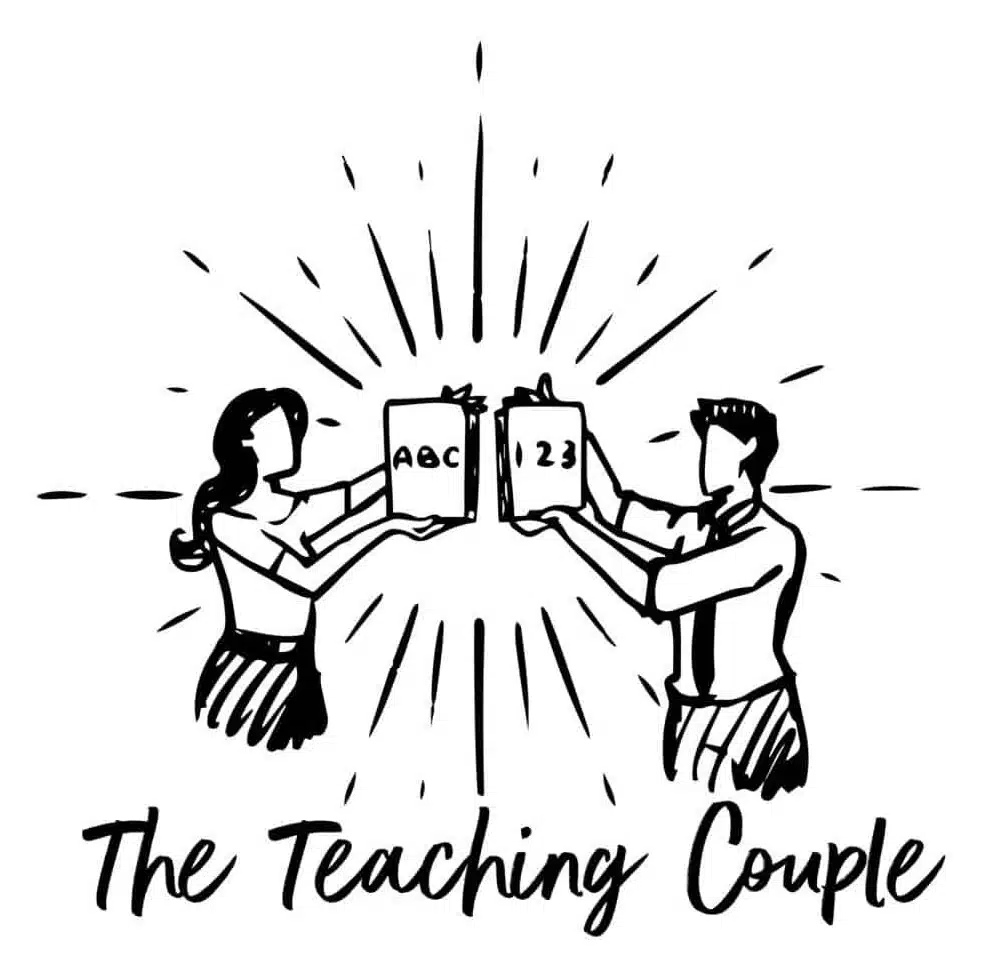Villanelle poems are a unique and intricate form of poetic expression, adored for their distinct and rigorous structure. With French origins, the villanelle consists of nineteen lines, which include five tercets followed by a final quatrain, giving it both a melodic and challenging framework for poets.
The repartition of the first and third lines throughout the poem sets it apart from other poetry forms, creating a haunting echo effect that is both rhythmic and thematic. This structure demands a precise blend of repetition and variation, leading to its celebrated status among poetic forms.
Related: For more, check out our article on How To Teach Villanelle Poetry here.

The villanelle’s place in literary history has been elevated by the works of several acclaimed poets.
A significant example is Dylan Thomas’ “Do Not Go Gentle into That Good Night,” renowned for its passionate plea against death and the gentle night, serving to illustrate the power and flexibility of the villanelle form.
This form allows for the exploration of an extensive range of themes and emotions, providing a rich canvas for poets to convey their messages in an impactful way.
Moreover, the form has evolved, adapting to different languages and cultural contexts, thereby expanding its reach in the literary world.
Key Takeaways
- Villanelles are defined by their distinctive structure of five tercets followed by a quatrain.
- They have been employed by poets to explore a broad spectrum of themes with intensity and depth.
- The form’s adaptability has seen it evolve and be embraced across various languages and cultures.
Related: For more, check out our article on How To Teach Ode Poetry here.
Essential Features of a Villanelle
A villanelle is a distinctive form of poetry known for its fixed structure which comprises 19 lines arranged in five tercets (three-line stanzas) followed by a final quatrain (four-line stanza).
This form artfully combines repetition and rhyme to evoke emotion and create a hypnotic effect.
Stanzas and Refrains: The villanelle’s stanzas are crucial to its identity. Initially, it presents two refrain lines in the first stanza, which alternate as the final line of the subsequent tercets. Both refrain lines return as a couplet in the final quatrain, drawing the poem to a close.
Rhyme Scheme: The rhyme scheme of a villanelle is particularly precise, traditionally following the pattern ABA for the tercets and ABAA for the quatrain. This means that the poem employs only two rhymes throughout, contributing to its melodic and memorable quality.
Meter: While there is no strict requirement for meter in a villanelle, many poets opt to write in a consistent meter to lend the poem a rhythmic uniformity.
Here is the structure summarised:
| Stanza | Lines | Rhyme | Refrain |
|---|---|---|---|
| 1 | 3 | ABA | Line 1 and 3 are Refrains |
| 2 | 3 | ABA | Line 3 repeats Refrain 2 |
| 3 | 3 | ABA | Line 3 repeats Refrain 1 |
| 4 | 3 | ABA | Line 3 repeats Refrain 2 |
| 5 | 3 | ABA | Line 3 repeats Refrain 1 |
| 6 | 4 | ABAA | Line 3 and 4 are Refrains 1 and 2 |
The fixed form of the villanelle challenges poets to work within its confines while expressing complex emotions and ideas. The repetition of refrain lines and the constrained rhyme scheme intensify the emotional experience, often creating an obsessive or plaintive tone.
Though the form is centuries old, it has enjoyed modern popularity and remains a testament to the power of structured verse in poetry.
Related: For more, check out our article on Examples of Free Verse Poetry here.
Historical Evolution of the Villanelle

The villanelle began its journey in the pastoral traditions of French literature and then gracefully made its way into the works of English poets, showcasing a remarkable adaptability and enduring charm.
Inception in French Tradition
The villanelle’s roots are entrenched in the rustic charm of French tradition, stemming from a pastoral song known as a villanella.
The evolution of this poetic form is often traced back to the late 16th century where Jean Passerat penned the first documented villanelle, “J’ay perdu ma Tourterelle” in 1606, setting a precedent for the structured poetic form that would later be embraced by numerous poets.
His work laid the foundation for what would become the fixed-form villanelle, characterised by a rigid pattern of repeating rhymes and refrains.
Adoption by English Poets
As the villanelle crossed linguistic boundaries, it was adapted by English poets who infused it with their style while maintaining its French verse structure.
The form was not immediately popular in English literature, but it saw a revival in the late 19th century, notably with Théodore de Banville championing its refashioning in French, which then influenced English literary circles.
Poets like Austin Dobson, Andrew Lang, and John Payne honoured the form in their own compositions, deepening the history of the villanelle within English poetry.
The term villanelle itself, as derived from the etymology of the word, grew to represent this intricate and skillful verse structure perfectly, embedding itself in the realm of English poetics.
Related: For more, check out our article on Examples of Haiku Poetry here.
Masterpieces and Notable Poets

The villanelle is a poetic form that has been mastered by a select few, creating works that resonate through time. This structure, with its repeating lines and intricate rhyme scheme, has been utilised by poets to evoke deep emotion and contemplation.
Dylan Thomas and ‘Do Not Go Gentle into That Good Night’
Dylan Thomas’s ‘Do Not Go Gentle into That Good Night’ stands as one of the most famous villanelles ever written. It serves as a powerful example of the form, employing the repetitious nature of the villanelle to instil a sense of urgency and resistance against death.
The poem’s refrain, “Do not go gentle into that good night,” and “Rage, rage against the dying of the light,” captures the human spirit’s struggle against the inevitable. Thomas’s masterpiece can be found discussed in detail on Interesting Literature.
Elizabeth Bishop and ‘One Art’
Elizabeth Bishop’s ‘One Art’ is another prime example of the villanelle, showcasing the poet’s deftness at controlling strict form to explore complex emotions.
Here, Bishop repeats the line, “The art of losing isn’t hard to master,” to delve into the theme of loss, both trivial and profound, in a seemingly casual tone that belies the poem’s deeper sense of resignation.
Bishop’s exploration of loss as an inherent part of life in the form of a villanelle is both moving and memorable. For further reading on Bishop and her influential work, consider the information compiled at PoetrySoup.
Related: For more, check out our article on Examples of Limerick Poetry here.
Analyzing Villanelle Structure
The villanelle is a fixed-form poetic structure, recognisable by its strict pattern and lyrical repetition.
It is composed of nineteen lines divided into five three-line stanzas known as tercets, followed by a concluding four-line stanza, or quatrain, thereby making it a distinctive form within poetry.
In terms of its format, the villanelle adheres to a specific rhyme scheme. The tercets follow an ABA rhyme, while the quatrain concludes with an ABAA scheme. This foundational structure provides a rhythmic and musical quality to the poem.
The defining feature of the villanelle is its refrains—repeated lines that occur throughout the poem. The first and third lines of the opening tercet alternate as the last lines of the subsequent tercets and are reunited as the final two lines of the quatrain.
The rules of this technique mean those lines must hold the key theme or emotion of the poem due to their repetition and emphasis.
| Stanza | Rhyme | Refrain |
|---|---|---|
| 1 | ABA | Lines 1 and 3 |
| 2 | ABA | Line 1 |
| 3 | ABA | Line 3 |
| 4 | ABA | Line 1 |
| 5 | ABA | Line 3 |
| 6 | ABAA | Lines 1 and 3 |
The expectation of a villanelle is not merely the strict repetition and rhyme, but the seamless interweaving of these elements to advance themes and evoke emotions.
It demands careful word choice and a deep understanding of the poetic form. Notably, despite the restrictions, the form allows for great expressiveness within its structure.
Themes and Use in Literary Expression
The villanelle is a classical poetic form that frequently explores themes of obsession, love, and the duality of joy and loss.
The stringent structure of the villanelle, with its repeating refrains and rhymes, serves to reinforce the poem’s central theme or emotions.
The repetitiveness can evoke a sense of intensity and fixation, often reflecting the speaker’s internal struggle or incessant contemplation on subjects such as beauty or the nature of power.
- Obsession may be articulated through the compulsive repetition of certain lines.
- Love and loss are commonly entwined themes, where the refrains underscore the intensity of feelings.
- The duality of joy and sorrow often finds expression within the poem’s alternating lines, mirroring life’s contrasting experiences.
The villanelle’s rigid form is thought to parallel the inescapability of certain emotions or situations, making it a powerful vehicle for literary expression.
The unchanging repetition can mimic the relentless nature of the themes it often explores—whether it is the endurance of love, the inexorable march of time, or the haunting grip of a lost opportunity.
Literature uses the villanelle to delve into the complexities of human emotions with a level of sophistication.
The contrast between the fixed structure and the fluidity of emotions being portrayed reveals the multifaceted nature of human experience – the beauty in pain, the power in vulnerability, and the joy in sorrow.
Comparative Forms of Poetry
When examining the villanelle, it’s intriguing to contrast its structure with other forms of poetry such as the sonnet and sestina. These comparisons accentuate the uniqueness and complexities of different fixed verse forms.
Similarities to the Sonnet and Sestina
Villanelles, sonnets, and sestinas all represent fixed verse forms in poetry, which means they adhere to specific patterns and structures. A villanelle consists of nineteen lines with a fixed rhyme scheme and involves the repetition of entire lines.
Similarly, a sonnet traditionally comprises fourteen lines with a variable rhyme scheme, often seen in the popular Shakespearean or Petrarchan forms. Like a villanelle, a sonnet also features a quatrain, or four-line stanza.
In contrast, a sestina employs a complex pattern of six six-line stanzas followed by a three-line envoy, where end words are repeated in a prescribed order.
- Villanelle: Five tercets + one quatrain
- Sonnet: Often three quatrains + one couplet (Shakespearean)
- Sestina: Six sestets + one tercet (envoy)
These forms require poets to work within preset confines, harnessing these constraints to enhance the lyrical and emotive power of their verses.
Differences from Free Verse and Haiku
Distinct from the rigid structure of villanelles, free verse poetry allows poets unlimited freedom regarding stanza length, rhyme, or rhythm, eschewing a predictable pattern for a more organic flow of ideas.
On the other end of the spectrum, a haiku is a very concise form, originally from Japan, which consists of just three lines, with a total of 17 syllables, often adhering to a 5-7-5 syllable pattern.
The villanelle’s complex repeating lines and rhyme scheme starkly contrast with the simplicity of the haiku and the unbound nature of free verse.
- Free Verse: No fixed scheme or pattern.
- Haiku: Three lines with a 5-7-5 syllable pattern.
Other forms like ballads, odes, and limericks each have their unique features—ballads often recount stories with a simple rhyme scheme, odes are stately and made to praise or glorify, and limericks present humorous five-line verses with a strict AABBA rhyme scheme.
Yet, the repetition and rhyme scheme within a villanelle create a melodious yet demanding form, distinguishing it clearly from these other poetic styles.

